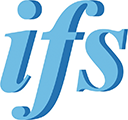

Highly viscous adhesives tend to pull filaments in industrial applications. This is due to the flow proper-ties of these adhesives. In industry, this leads to the use of cleaning equipment or to contamination of components. The consequences are increased adhesive consumption, hazardous waste, reworking, cleaning and environmental pollution. Currently, materials science methods for characterizing the tendency of adhesives to draw filaments are limited in their predictive power. Mechanical engineering to reduce filaments have not been systematically investigated so far.
The aim of the project was to improve the understanding of the causes of filament stretching and to develop nozzles that actively support filament breakage. Flow simulations were used to quantify the filament stretching and improve the prediction of the filament breakage length.
The methodical approach to achieve the goal presupposed the following working hypothesis: The stringing tension is a rheological material response to a specific, calculable stretch, shear and temperature field of the applied free adhesive bead and can be reduced by actively influencing this field.
This methodical approach goes far beyond previous attempts to describe the adhesive bead pull. Correspondingly, the rheological material behavior under shear and elongation flow of adhesives with strong and weak thread tension was measured, the transient flow field at the creation of the stringing was simulated and the physical causes for the string tension derived. At the same time, mechanical engineering methods for reducing stringing were experimentally investigated and their ability to influence the flow field was assessed qualitatively and quantitatively.